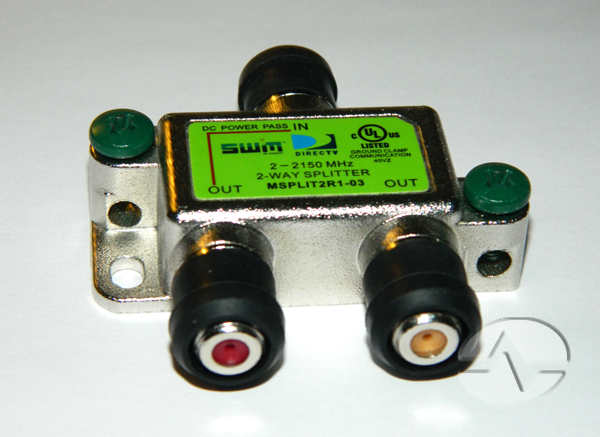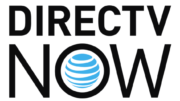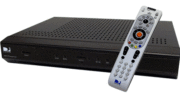Take a look at the image above. Yes, it’s an older photo. You can tell from the old DIRECTV logo. But that’s not the point. It’s a splitter designed for DIRECTV SWM systems. Two of the three connections on it have a red center, while the center of the other one is sort of off-white. Did you ever wonder why?
I’ve got the power (and you’ve got that song stuck in your head)
Whether it’s a satellite dish or an antenna, many devices require power to function. They amplify or otherwise “massage” the signal before it gets to a television or receiver. RF signals, especially those from satellites, can be very weak and special electronics may be required to help you receive them.
Some systems like antenna rotators use a separate cable to get power to where it needs to be. This tends to be unpopular, because it’s expensive, and also because it means extra holes drilled in the wall. Luckily there’s an easier way.
The easiest way to get power where it needs to go is through the cable itself. DC power doesn’t have any effect on the RF signals traveling through a cable since DC power travels through the center of the cable while RF only travels on the outer skin of the center conductor. So, many systems use something called a “power inserter” or “power injector” to put enough power in the cable to do what needs to be done.
Get that power where it needs to be
Under normal circumstances, voltage running through a cable is considered to be a bad thing, the result of a power surge. So, a well-made splitter will block this higher voltage when it passes through. (This is called a “DC Block.”) If you are running power to an antenna or dish, you need a special splitter that allows that power to pass through. (That’s called “DC Power Passing.”) It’s easy to think that the power passes from the one input to the many outputs, but it actually passes the opposite way, toward the antenna or dish.
What happens if you accidentally run power to a device that’s not expecting it? Let’s say, it’s not pretty. Generally the device will fry itself fairly quickly, sometimes with a pleasant, although slightly scary, light show. You can run a non-powered line through a power-passing splitter just fine, but connect a receiver to the wrong end of a power-passing line and you will have trouble, my friend.
The bottom line here
The red ports are the DC Power Passing ports. The yellowish port has a DC block. It’s worth pointing out that these colors aren’t industry standard. In general, red does tend to signify power, but that’s about it. Coax connectors often have an off-white or yellowish center if they have a DC block, but some don’t. It’s also true that you’ll see connectors with a blue center. These are supposed to tell you they’re ok for high frequencies. Except, some high frequency connectors have white centers or yellow centers. I swear there was one time I saw a connector with a green center but no one believes me.
No matter what you need, no matter whether it’s a connector, cable, or just some good advice, you’ll get it when you shop at Solid Signal. If you want to get the opinion of a real technician, we’re here for you! Call us at 888-233-7563 and you’ll be connected to a real, knowledgeable person in our US-based corporate offices. We pride ourselves on customer service, and we’re here to help.





